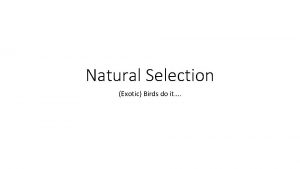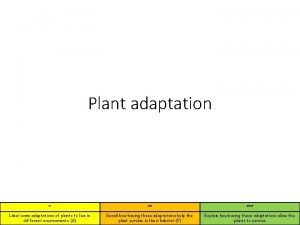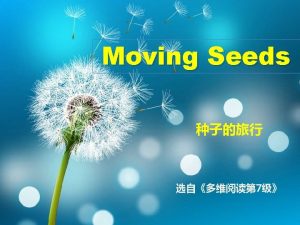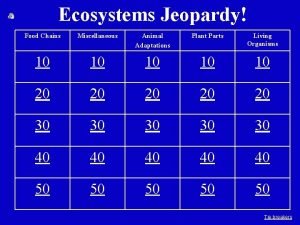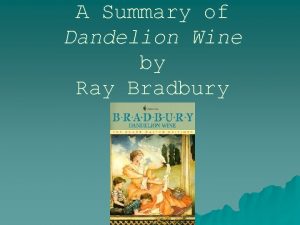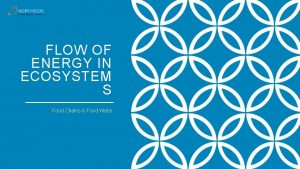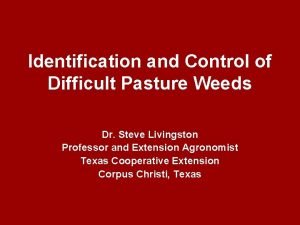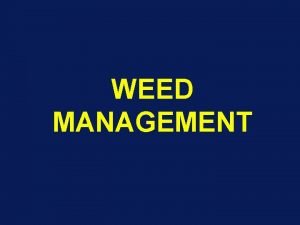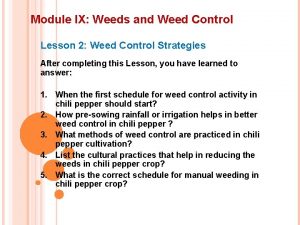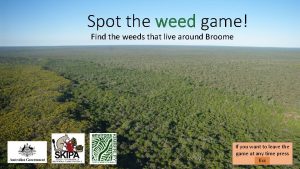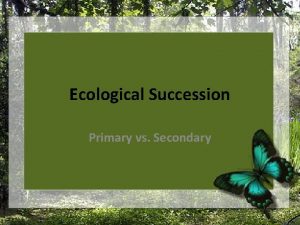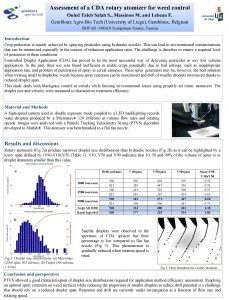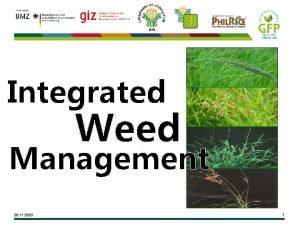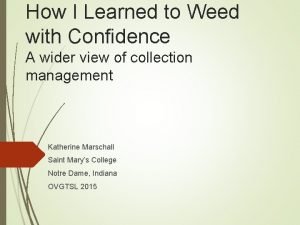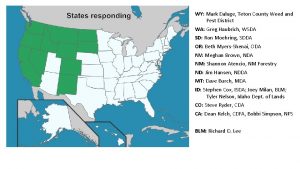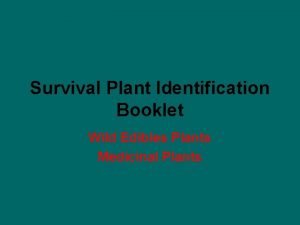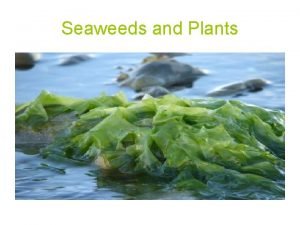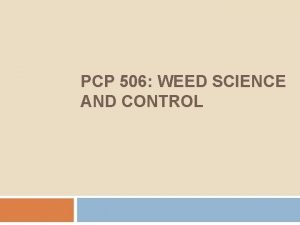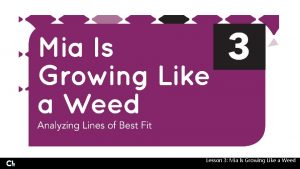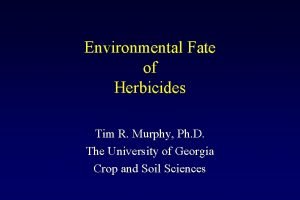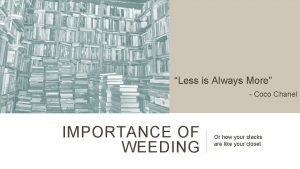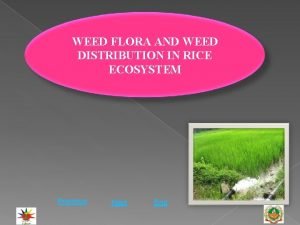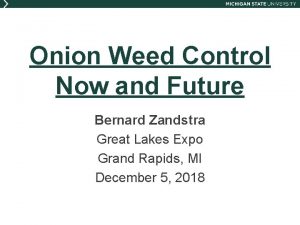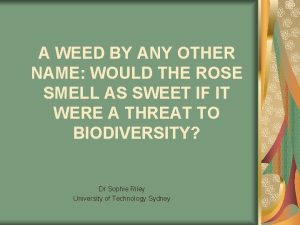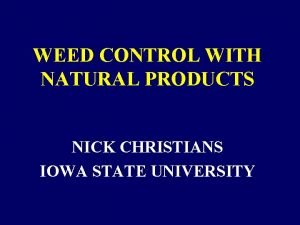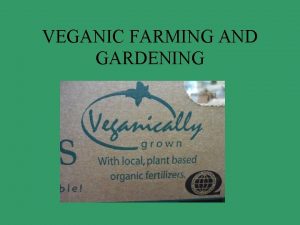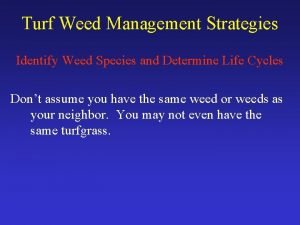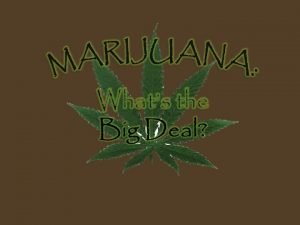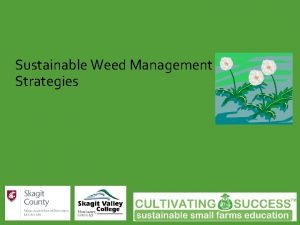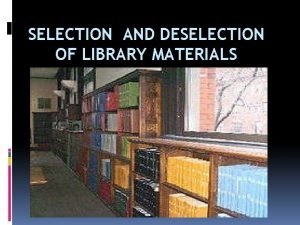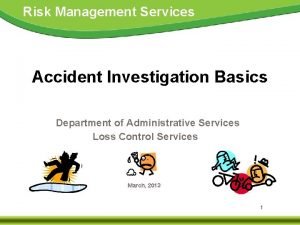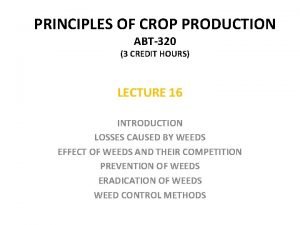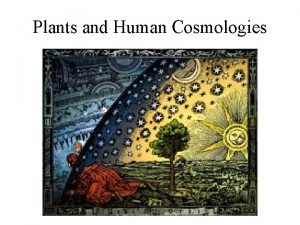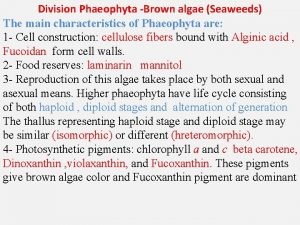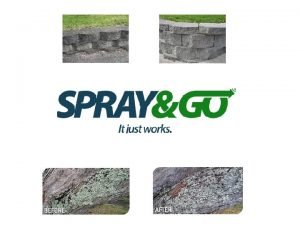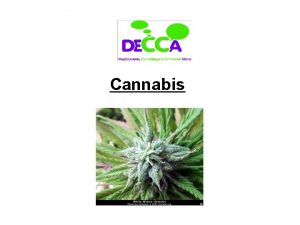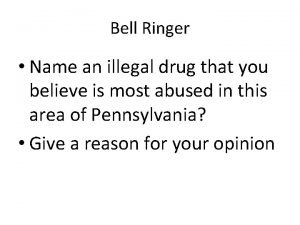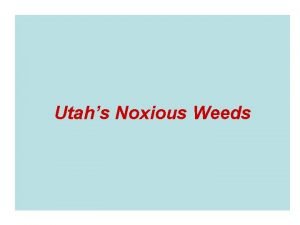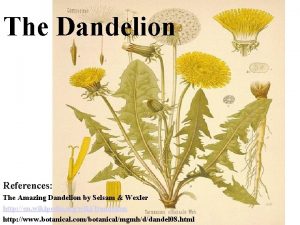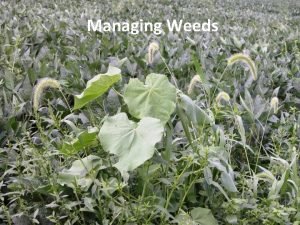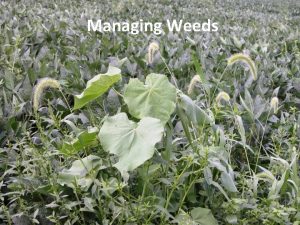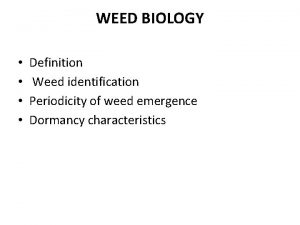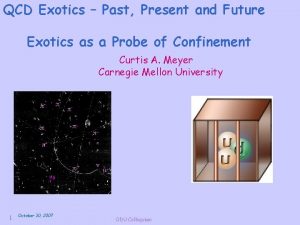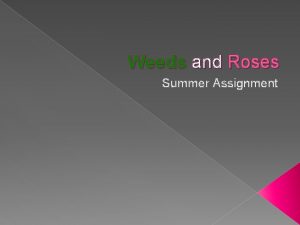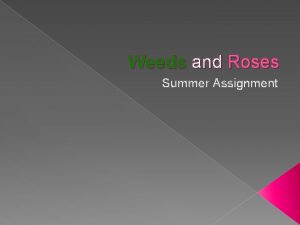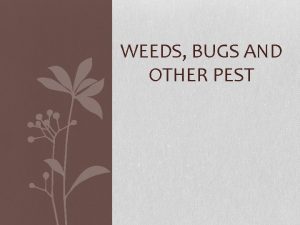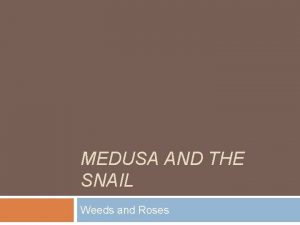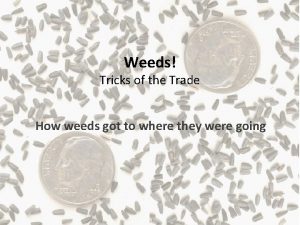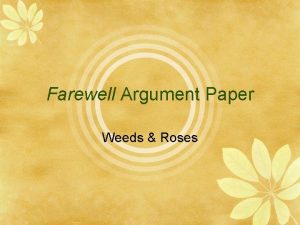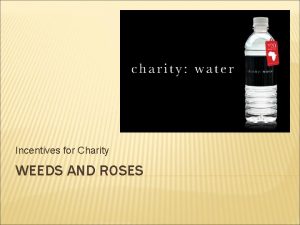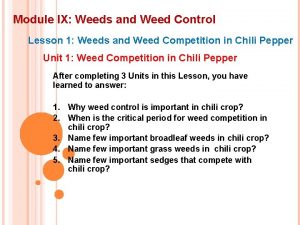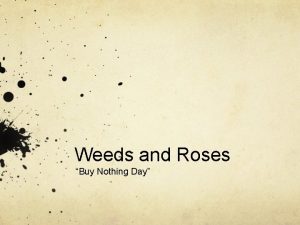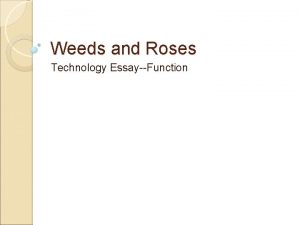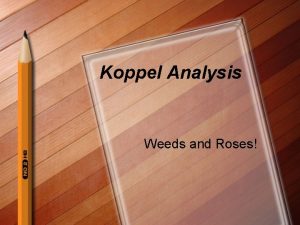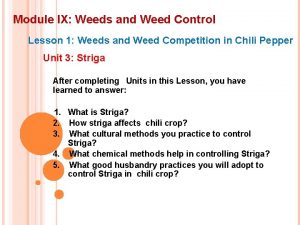Weeds and Exotics Dandelion What is a weed




























































- Slides: 60

Weeds and Exotics Dandelion

What is a weed? • a plant in the wrong place • a plant out of place • a plant whose virtues are yet to be discovered • one person’s weed is another person’s herbarium specimen

What is an exotic? • Exotic or alien species are species that are not native to the area in question – i. e. an exotic in Illinois would be a species that did not occur here naturally and was somehow introduced to Illinois by human activity

Norway maple and orchard grass – exotic in Illinois, native to Eurasia

Black locust and osage-orange – exotic in Illinois, native to North America

Exotic Species • Conservation biologists typically call introduced species “exotic species” - species which live outside their natural range • Botanists typically refer to exotic plants as alien species • Other terms you may see include biological invaders, introduced species, invasive species, non-indigenous species, non-native species (my preferred term)

What is a weed? • In general, we consider weeds to be exotic or alien plants which have somehow become problem plants – • Problem plants typically have the following two characteristics – 1) the plant has achieved a threshold level of abundance, and 2) someone is concerned about the plant

Perspectives on Weeds • There appear to be three dominant perspectives on weeds: agriculturalranching, suburban, and ecological.

Agricultural-Ranching Perspective • The agricultural perspective considers any plant a weed if it competes with crops for the available nutrients and moisture in a field. Such plants can lower crop yield or cause crop failure. • The ranching perspective considers any plant a weed if it presents a threat to livestock or reduces the quality of forage that is otherwise available.

Suburban Perspective • The suburban perspective considers any plant a weed if it invades the lawns and gardens of suburban homeowners and other managed landscapes of mainstream society, which includes the lawns and gardens of banks, schools, churches, malls, parks, government buildings, industrial parks, etc.

Suburban Perspective The ideal plant of the managed landscape in suburbia has the following characteristics: 1) It is often an introduced species that is poorly adapted to the surrounding environment. 2) It is a sterile hybrid or patented cultivar. 3) It is difficult to maintain and often short-lived. 4) It doesn't spreadily to places where it doesn't belong. 5) It has obvious aesthetic or culinary properties. 6) It has to be purchased at a store or through a catalog (although heirloom plants may be passed from one gardener to another).

Suburban Perspective • The weediness of a plant is defined by the absence of the preceding characteristics. Thus, suburbia considers any plant a weed that is well-adapted to its environment, prone to reproduce itself and spread, requires little or no effort to maintain, and has no obvious aesthetic or culinary properties.

Suburban Native Plant Garden

Ecological perspective • One ecological perspective considers any plant a weed if it is a pioneer species that thrives in a degraded habitat with a history of disturbance through human agency. Such weeds may be native or introduced. • There also superweeds that have the capacity to invade high quality natural areas. Superweeds are usually introduced plants with few natural enemies in the area of invasion. Some ecologists are only concerned with superweeds.

Fireweed (Epilobium angustifolium) in London post bombing

Common Buckthorn – superweed?

Alfalfa (Medicago sativa) – good crop or weed?

Another way to think about weeds from Allison 2011 Problem invasive species Not native to ecosystem. Increase and spread in ecosystem, offspring easily dispersed. Lead to decline in native species via negative interactions such as competition, predation or parasitism. Cause changes in ecosystem properties such as hydrology, nutrient cycles, energy flow, fire regime. Tolerant of human disturbance regimes. Problem native species Native to ecosystem. Effects are ecologically similar to problem invasive species. Frequently they are edge species tolerant of human disturbance.

Another way to think about weeds Non-problem native species Non-problem non-native species Native to ecosystem. Populations exhibit minor fluctuations in size and distribution. Presence enhances other native species. Maintain ecosystem properties. Frequently sensitive to human disturbance regimes. Not native to ecosystem. Reproduce and survive in ecosystem. Populations exhibit minor fluctuations in size and distribution. Presence at least is not leading to decline in native species abundance or distribution. Do not lead to changes in ecosystem properties. Have potential to become problematic as climate changes.


Japanese Knotweed in Britain

Exotic plants in New Zealand • Native flora of 2065 species • 24, 774 documented introduced alien species • About 2200 exotics have become established (naturalized)



Problem Plants • Perennial herbs – many examples are found in wetlands like purple loosestrife, and grasslands like Canada Thistle, and our woods like garlic mustard (a biennial)

Problem Perennial Herbs Purple Loosestrife Garlic Mustard

Problem Perennial Herb Canada thistle – Cirsium arvense

Field of Canada Thistle

Problem Plants • Perennial grasses – replace native grasses in grazed rangeland pose a serious fire risk to native trees in forest ecosystems. Perennial grasses pose a double fire hazard: 1) they produce much greater bulk of flammable material than was produced by native plants and thus lead to more intense fires, and 2) the timing of their flammability is different than native plants so that fires occur at times of the year for which native plants are not adapted – Smooth Brome and Reed Canary Grass (Phalaris arundinacea)

Problem Perennial Grasses Smooth Brome Phalaris arundinacea

Problem Plants • Vines – Serious pests in woods and disturbed habitat – field bindweed and kudzu

Problem Vines Field Bindweed Kudzu

Problem Plants • Shrubs – Very serious problems in most climates – often become severe problems in areas where native vegetation has been overgrazed – multiflora rose

Problem Shrub Multiflora Rose

Problem Plants • Trees – trees are potentially disastrous for nature conservation and watershed management. Often invasive trees do well in disturbed, edge habitat and become the canopy dominants, out-competing native trees – among our problem trees are autumn olive (small, almost a shrub), black locust, tree-of-heaven

Problem Trees Autumn Olive Black Locust Tree of Heaven

Illinois Noxious Weed Act Section 220. 10 Duty of Every Person a) It shall be the duty of every person to control the spread of and to eradicate all noxious weeds on lands owned or controlled by him in the State of Illinois. b) All noxious weeds shall be controlled or eradicated by methods approved and adopted pursuant to the Act and these rules.

Illinois Noxious Weeds • • • Section 220. 60 Noxious Weeds The following plants within the sovereign territory of the State of Illinois are designated and declared noxious weeds: a) Marijuana (Cannabis sativa L. ); b) Giant Ragweed (Ambrosia trifida L. ) within the corporate limits of cities, villages, and incorporated towns; c) Common Ragweed (Ambrosia artemisiifolia L. ) within the corporate limits of cities, villages, and incorporated towns; • • • d) Canada Thistle (Cirsium arvense); e) Perennial Sowthistle (Sonchus arvensis); f) Musk Thistle (Carduus nutans); g) Perennial members of the sorghum genus, including johnsongrass (Sorghum halepense), sorghum almum, and other johnsongrass X sorghum crosses with rhizomes; and h) Kudzu (Pueraria labata). (Source: Amended at 26 Ill. Reg. 14644, effective September 23, 2002)

Cannabis sativa

Giant Ragweed

Common Ragweed

Canada Thistle

Perennial Sowthistle

Musk or Nodding Thistle

Johnson Grass

Kudzu

Are weeds of some positive value? 1) Some weedy species are pioneers of degraded landscapes where the soil is wornout or nearly destroyed. Such weedy species are necessary to the healing process of the landscape, as their decaying organic matter improves the quality of the soil and the sets the stage for the succession of non-weedy plants – alfalfa, red clover

Red Clover

Are weeds of some positive value? 2) Some weedy species are pioneers of disturbed landscapes where the soil is high quality, but exposed to erosion by wind and water. Such weedy species quickly cover the exposed soil and prevent erosion from occurring until they are replaced by nonweedy plants – annual ryegrass

Annual Ryegrass

Are weeds of some positive value? 3) Weedy plants are often important sources of food and cover to various kinds of wildlife, including mammals, birds, and insects. For example, the caterpillars of Papilio polyxenes asterias (Black Swallowtail butterfly) feed on Daucus carota (Wild Carrot) and Pastinaca sativa (Wild Parsnip).

Wild Carrot and Wild Parsnip

Black Swallowtail

European goldfinch on Canada thistle

Autumn olive along roadside

Autumn olive fruits

Are weeds of some positive value? 4) Weedy plants are potentially important sources of food, medicines, herbicides, and other products to modern society. For example, our major food crops are almost all weeds in terms of being exotic species for the Midwest and some of them such as apples can survive outside of cultivation. A powerful herbicide has been derived from Centaurea biebersteinii (Spotted Knapweed), while the fiber of Cannabis sativa (Marijuana) can be used to make paper, rope, or clothing.

Spotted Knapweed

Cannabis/Hemp Fibers

Cannabis/Hemp Fibers
 Natural selections exotics
Natural selections exotics Gripeweed
Gripeweed Mariam barseghyan
Mariam barseghyan Macbeth
Macbeth Adaptations of a dandelion
Adaptations of a dandelion But
But Jeopardy ecosystems
Jeopardy ecosystems Dandelion wine summary
Dandelion wine summary Decomposer food chain
Decomposer food chain Rubber dandelion
Rubber dandelion The hunger games analysis introduction
The hunger games analysis introduction Texas pasture weeds
Texas pasture weeds Weeds denise
Weeds denise Explain awarding the world its world
Explain awarding the world its world Dumbi sitti weed
Dumbi sitti weed Economic importance of weed
Economic importance of weed Nitrogen in soil is present in the form of
Nitrogen in soil is present in the form of Acetic acid to kill weeds
Acetic acid to kill weeds Brown weeds
Brown weeds Lesson plan on weeds
Lesson plan on weeds Weeds game
Weeds game Primary succession
Primary succession Cda weed
Cda weed Disadvantages of iwm
Disadvantages of iwm Weed and confidence
Weed and confidence Spider control teton county
Spider control teton county Jewel weed medicinal
Jewel weed medicinal The thallus of a macroalgae/seaweed refers to its
The thallus of a macroalgae/seaweed refers to its Weed definition in agriculture
Weed definition in agriculture Mia's growing like a weed answers
Mia's growing like a weed answers Weed science definition
Weed science definition Sniffable weed
Sniffable weed Weed control murphy
Weed control murphy Accident weed diagram
Accident weed diagram Brain parts
Brain parts Less is more chanel
Less is more chanel Spider mites weed
Spider mites weed Mayil kondai weed
Mayil kondai weed Onion weed in lakes
Onion weed in lakes Alien weed definition
Alien weed definition Wow weed control
Wow weed control Veganic weed
Veganic weed Weed
Weed Weed wrench
Weed wrench Mary jane grass
Mary jane grass Weed hun
Weed hun Dy b
Dy b Sustainable weed management
Sustainable weed management Selection and deselection
Selection and deselection Accident weed
Accident weed Biological method of weed control
Biological method of weed control Devil's weed
Devil's weed Herndon montana
Herndon montana Division plant
Division plant Green assassin weed killer
Green assassin weed killer Weed millionare
Weed millionare La laitière vermeer cycle 3
La laitière vermeer cycle 3 Ganga weed
Ganga weed Bell ringer drugs
Bell ringer drugs Red yellow blue green orange purple
Red yellow blue green orange purple Willaim blake
Willaim blake
